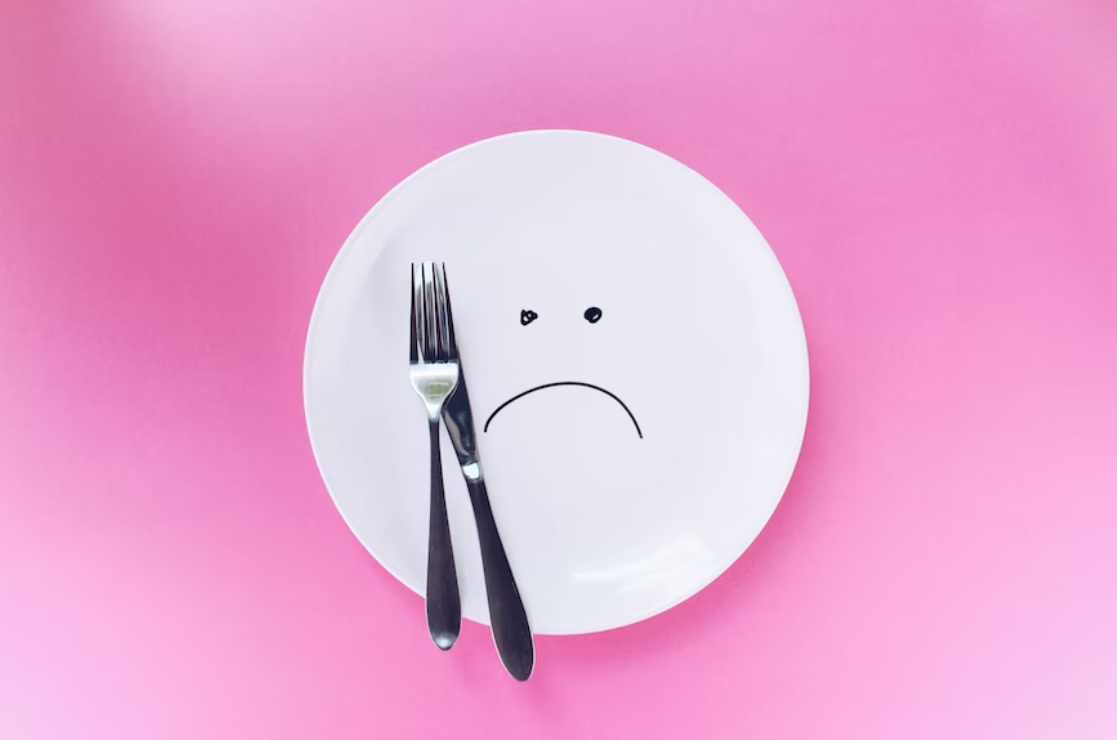Are you yearning for an instant transformation, a magical reduction in your waist size virtually overnight? This desire is not uncommon. In today’s fast-paced world, we often crave quick fixes and instant gratification, especially when it comes to our appearance. The notion of waking up to a slimmer waist sounds almost too good to be true—and, well, it might just be.
While there are certainly ways to make progress and see changes overnight, substantial and lasting change is usually not an overnight affair. It’s a journey that involves commitment, patience, and a realistic understanding of our bodies. This article aims to explore this intriguing topic, offering you insight into what’s possible, what’s myth, and what steps you can take to achieve your goals.
We’ll delve into the science of weight loss, demystify popular misconceptions, and provide practical advice for those seeking sustainable results. So, if you’re ready to learn, let’s embark on this enlightening journey together.
Understanding Fat Loss and Your Body
Understanding the nature of fat loss and how your body works is a key first step in your weight loss journey. Let’s break this down further:
The Metabolic Process
Our bodies are continuously undergoing a metabolic process called lipolysis, which is the breakdown of fats (lipids) into smaller components that can be used for energy. This happens naturally throughout the day as part of our body’s function and is not something that can be dramatically accelerated within a few hours. Moreover, when we sleep, our metabolic rate drops, making significant overnight fat loss even more improbable.
Caloric Deficit and Weight Loss
To achieve successful weight loss and reduce inches off your waist overnight, it’s important to understand the principles of creating a caloric deficit. This involves consuming fewer calories than your body uses, which prompts the body to utilize stored fat for energy, leading to weight loss. However, it’s crucial to note that this process takes time and consistency. Generally, experts recommend aiming for a caloric deficit of 500 to 1,000 calories per day, resulting in a safe and sustainable weight loss of 1-2 pounds per week.
While the process of losing weight requires dedication and patience, there are products available in the market that claim to aid in weight loss. According to a recent article in D Magazine, certain pills have shown promising results in shedding excess pounds. These pills are believed to be highly effective in supporting weight loss efforts.
Body Composition and Fluid Balance
While genuine fat loss may not be achievable overnight, there are methods to modify your body’s composition and fluid balance temporarily. This can lead to a reduced waist circumference within a short time frame. This reduction is typically due to less bloating and improved muscle tone, not actual fat loss.
Drinking plenty of water, reducing sodium intake, and eating fiber-rich foods can help regulate your body’s fluid balance and decrease bloating. Strength training can also enhance muscle tone, leading to a leaner appearance. However, remember that these changes, while valuable, do not equate to genuine fat loss.
Busting Myths About Weight Loss
There is a sea of misinformation surrounding weight loss, and it’s crucial to dispel these myths to understand and undertake a healthy weight loss journey.

Research studies have debunked weight loss myths, showing that skipping meals may hinder metabolism, and low-fat diets are not necessarily superior for weight loss. Relying on scientific evidence is key for a healthy weight loss journey.
Cutting a Food Group Will Lead to Weight Loss:
Eliminating an entire food group, such as carbohydrates or fats, is not a recommended weight loss strategy. Our bodies require a balance of macronutrients (carbohydrates, proteins, and fats) to function optimally. Each food group provides essential nutrients that support various bodily functions. Restricting or eliminating any major food group can result in nutrient deficiencies and negatively impact overall health.
All Calories are Created Equal:
While calories are a unit of energy, not all sources of calories are nutritionally equal. Foods that are nutrient-dense and provide essential vitamins, minerals, and fiber are more beneficial for overall health and weight management. For example, 200 calories from lean protein and vegetables provide vital nutrients and promote satiety, while 200 calories from processed junk food often lack nutritional value and can leave you feeling unsatisfied, leading to overeating.
Sweating Means You’re Burning More Fat:
Sweating is a natural cooling mechanism of the body and is not directly correlated with fat burning. While sweating can occur during intense workouts, it primarily helps regulate body temperature. The amount you sweat depends on various factors, such as environmental conditions, exercise intensity, and individual differences in sweat response. Fat loss occurs when you create a calorie deficit through proper diet and exercise, not solely through sweating.
Spot Reduction is Possible:
The concept of spot reduction, where targeted exercises reduce fat in specific areas of the body, is a persistent myth. While exercises can strengthen and tone specific muscles, they do not directly lead to fat loss in those specific areas. Fat loss is a result of overall body fat reduction through a consistent caloric deficit. The body determines where it will store or burn fat based on genetic and hormonal factors, not specific exercises.
Supplements and Detox Teas Can Lead to Quick Weight Loss:
Many supplements and detox teas claim to provide quick weight loss results, but these claims are often misleading. While they may cause temporary water weight loss due to their diuretic effects, this is not actual fat loss. Once you rehydrate, the weight will likely return. Additionally, these products can have harmful side effects and are not regulated as strictly as medications. It’s crucial to approach them with caution, prioritize whole foods, and focus on sustainable lifestyle changes for long-term weight loss success. In line with this, an article in Orland Magazine emphasizes that PhenQ effectively targets weight loss in five different ways to ensure visible outcomes.
How Can You Lose Inches Off Your Waist Overnight?
Stay Hydrated:
Drinking plenty of water helps maintain your body’s fluid balance and prevents water retention, which can cause bloating. Aim to drink enough water throughout the day to stay properly hydrated.
Reduce Salt Intake:
Excess sodium can lead to water retention and bloating. Limit your consumption of high-sodium foods like processed meats, canned soups, and packaged snacks. Instead, opt for fresh, whole foods and season your meals with herbs and spices for flavor.
Manage Stress Levels:
High stress levels can contribute to bloating and digestive discomfort. Practice stress management techniques like deep breathing exercises, meditation, or engaging in activities you enjoy to help reduce stress and promote a healthier waistline.

Get Adequate Sleep:
Poor sleep can disrupt hormonal balance, which may contribute to weight gain and bloating. Aim for 7-9 hours of quality sleep each night to support overall well-being and a healthier waistline.
Wear Waist-Trimming Garments:
Choose clothing options that provide gentle compression or waist-trimming features. High-waisted pants, skirts, or shapewear can help cinch in your waist and create a smoother silhouette.
Avoid Foods that Cause Bloating:
Some foods can contribute to bloating and make your waistline appear larger. Limit or avoid foods such as carbonated drinks, salty snacks, fried foods, processed foods, and foods high in sodium or artificial sweeteners. Instead, opt for whole, unprocessed foods that are easier to digest.
Tips to Make Your Waist Smaller Without Exercising, Dieting, or Trying
Improve Your Posture:
Maintaining good posture not only benefits your overall appearance but also instantly makes your waist appear slimmer. Stand tall, pull your shoulders back, and engage your core muscles. Proper alignment elongates your torso and creates the illusion of a narrower waistline.
Wear the Right Clothes:
Choosing the right clothing can flatter your waistline and create the appearance of a smaller waist. High-waisted bottoms, such as pants or skirts, can cinch in your waist and enhance your curves. Belting dresses or tops at the waist accentuates your natural shape. Peplum tops, with their flared waistline, can create the illusion of a smaller waist by providing added volume to the hips.
Get Enough Sleep:
Quality sleep plays a crucial role in maintaining a healthy weight and overall well-being. Lack of sleep can disrupt hormonal balance, leading to increased appetite and cravings. Aim for 7-9 hours of uninterrupted sleep each night. Establish a bedtime routine, create a conducive sleep environment, and prioritize restful sleep to support your weight management goals.
Related Article:
If You Starve Yourself How Long to Lose Weight?
Conclusion
In conclusion, while the idea of losing inches off your waist overnight may sound enticing, it’s important to approach the topic with realistic expectations. True and lasting waistline reduction requires a sustained effort and a holistic approach to weight loss. While there are strategies to temporarily reduce bloating and create a slimmer appearance, significant fat loss takes time and consistency.
To achieve sustainable results, a combination of regular exercise, a balanced diet, and a healthy lifestyle is essential. Embrace the journey of long-term weight management, and consult with healthcare professionals for personalized guidance. Remember, prioritizing overall health and well-being should be the ultimate goal. By making informed choices and setting realistic expectations, you can embark on a rewarding and successful weight loss journey.
